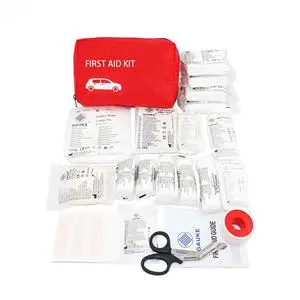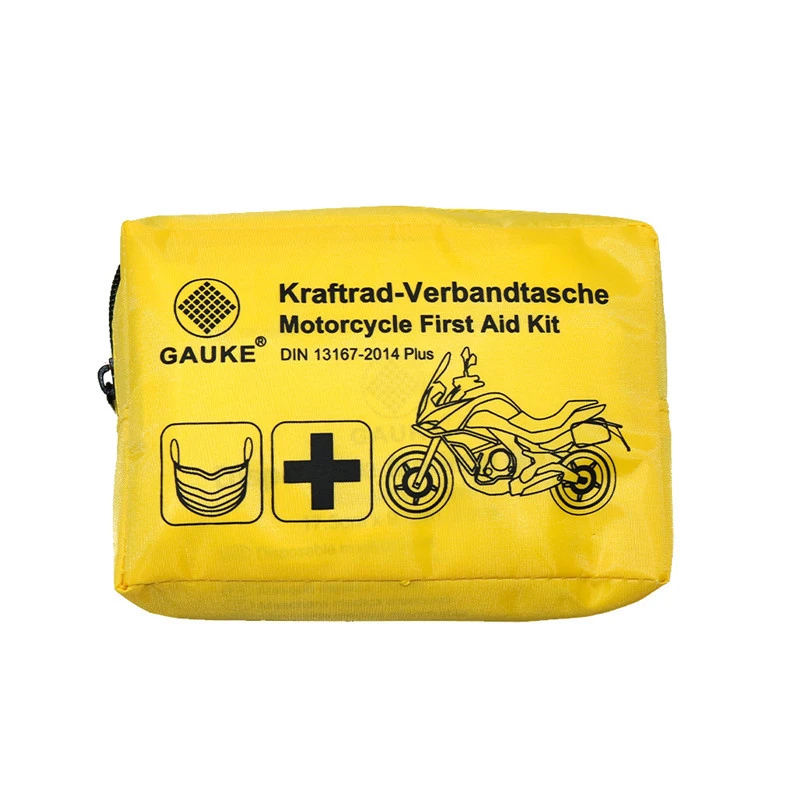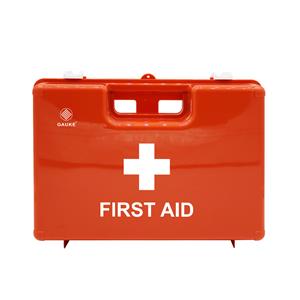What You Should Know About Roller Bandage
Providing emergency care to an injured or sick person comprises first aid. The first aid kit is composed of different components that include plasters, sterile gauze dressings, safety pins, sterile gloves, cleansing wipes, scissors, tweezers, sticky tape, thermometer, antiseptic cream, painkillers, and several types of bandages.
A roller bandage is among the most common type of bandages used while providing first-aid care. The roller bandages are used for a variety of reasons and may be used in conjunction with a wound dressing.
Roller Bandage
A roller bandage is referred to as a strip of cotton or gauze that is prepared into a roll. A roller bandage is often used in combination with a dressing in the presence of a wound. A roller bandage is made of crepe, cotton, or elasticized crepe based on the magnitude of desired pressure.
A lightweight cotton roller bandage is used when holding a dressing in place. On the contrary, elasticized crepe is used when soft tissue injury occurs and application of firm pressure or support is required.
Uses of Roller Bandage
A roller bandage has the following applications.
1. To immobilize body parts that are injured (muscle sprain and torn muscles) to prevent further injury and promote recovery.
2. To apply and maintain pressure to control both internal and external bleeding.
3. To secure a wound dressing in its place.
4. To absorb blood drainage from the wound.
5. To apply pressure on an injured limb.
6. To provide support to an injured joint or limb.
Types of Roller Bandages
Following are the three types of roller bandages.
1. Elastic Roller Bandage
An elastic roller bandage is made of cloth and elastic material. This makes the elastic roller bandage capable of stretching and retracting. This roller bandage complies with uneven surfaces and maintains an even pressure on the covered area. Moreover, the elastic roller bandage is used for restricting the movement of the injured area. For instance, an elastic roller bandage is for the immobilization of a sprain. One shall ensure that the bandage is not tight enough to restrict the blood flow.
2. Kerlex Bandage
Kerlex bandage easily complies with uneven surfaces that include ankle, foot, groin, knee, elbow, Kerlex bandages are primarily used for bleeding injuries.
3. Gauze Roller Bandage
Gauze roller bandage is made of cotton fabric. The gauze roller bandage is loosely woven and absorbent. Unlike other kings of bandages, a gauze roller bandage does not comply with uneven surfaces. Hence, one shall not use gauze roller bandages on the groin, shoulder, elbow, and other jointed areas that are prone to chafing. The primary use of gauze roller bandage is to control bleeding of injuries that occur on the lower leg, thigh, upper arm, and forearm.
Application of Roller Bandage
Before using a roller bandage, one shall ensure that the bandage is of the correct width for the respective body part. The recommended widths for different body parts are written below.
1. 75 mm roller bandage width for hand, foot, lower arm, and elbow.
2. 100 mm roller bandage width for knee, lower leg, and upper arm.
3. 150 mm roller bandage width for trunk or lower leg.
For optimal results, one shall use a bandage with some stretch in its weave. This makes the bandage easier to apply and the bandage stays in place for a longer duration. One shall use the correct technique to apply a roller bandage in order to provide sufficient support to the injured part along with maximum comfort.
Correct Technique of Using Roller Bandage
Follow the mentioned steps in order to apply the bandage correctly and derive maximum benefits.
1. Before applying the bandage, support the affected part adequately and position the affected part in maximum comfort.
2. Hold the head of the bandage on top and wrap the tail of the bandage around the affected body part. One shall avoid unrolling the bandage for more than a few centimeters each time one wraps the roller bandage.
3. Each time one turns the bandage around the affected part of the body, one shall apply a locking turn to hold the bandage securely under each turn.
4. Start applying the bandage from the middle of the affected body part and proceed in an outward fashion.
5. One shall wrap the roller bandage twice around the injured part.
6. While applying the roller bandage, begin from the narrowest part of the limb or body below the dressing and work the way upwards.
7. While applying the roller bandage, one shall ensure that each turn of the bandage covers two-thirds of the bandage from the previous turn.
8. While applying the roller bandage in conjunction with a dressing, one shall cover the dressing or padding entirely.
9. While applying the bandage to jointed parts such as the elbow and knee, wrap the roller bandage in the form of an '8' figure to hold the dressing in place and support the injured part.
10. One shall abstain from covering fingers and toes in order to check the circulation afterward.
11. At the end of applying a roller bandage, finish with a straight turn.
12. One shall secure the bandage with adhesive tape or a safety pin.
13. While securing the bandage, abstain from using metal clips as they are less effective and may fall off during routine activities.
14. After applying the roller bandage, assess circulation by pressing on the toes or fingertips until the skin turns pale followed by immediate return of the color.
15. If the color of the skin does not return promptly, one shall loosen the applied roller bandage.
Gauke Conforming Bandage
Gauke Conforming Bandage comes in different widths including 1", 2", 3", and 4" roller bandages. The roller bandage is made of polyester and viscose which makes it durable and breathable, respectively. Gauke Conforming Bandage is approved for product quality assurance, hence, safe, and effective for use.

Gauke roller bandage production line
Takeaway
A roller bandage is an integral part of the first-aid kit. These bandages are available in three different forms including Kerlex, elastic, and gauze roller bandage, and in different widths depending on the location of the injury. While applying a roller bandage, one shall use the correct technique mentioned in the preceding discussion to stabilize the injured part, secure dressing, provide maximum comfort, and promote healing.




